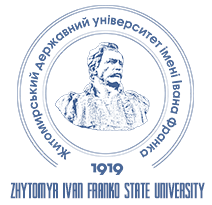THE USE OF VISUAL ELECTRONIC CIRCUITS MODELLING AND DESIGNING SOFTWARE FRITZING IN THE EDUCATIONAL PROCESS
DOI:
https://doi.org/10.35433/pedagogy.1(108).2022.198-208Keywords:
STEM-education, systems for modeling, Arduino, electronics, training project, constructorsAbstract
The article analyzes the current state of the issue of STEM-education in general secondary education of Ukraine, considers the prospects of introducing elements of circuitry within the school course of computer science (CS) as one of the elements of STEM-education, moreover, it reviews the possibility of implementation of the mentioned part as one of the components of professional training of computer science teachers. The analysis of the recent researches and publications on a problem of use of electronic devices in educational process is carried out; the choice of the open software platform Arduino as an auxiliary didactic tool for studying the elements of computer circuitry is substantiated. The most common Arduino model series are described and the examples of their applied use in real-life projects are given. The main technical specs and features of Arduino Uno electronic components are given and explained. The Atmega328P microcontroller, the main computing center of the platform, and its main structural elements are considered in detail; in order to substantiate the offered method, a program suite for creating visual electronic circuits – Fritzing is taken as an example with detailed description of its functions and capabilities. This software product provides the opportunity to visually present the project in different forms (layout, scheme and/or printed circuit board). Any of these views can be used as the main work environment of the project and can be selected at any time. Fritzing has a library of ready-made projects, which greatly facilitates the learning process. For greater clarity, all the processes of creating a prototype of the electronic game "Hunter" in the Fritzing environment are described and illustrated, as well as a description of the process of creating the game itself. Mentioned software product is used in the process of professional training of future teachers of computer science, mathematics and physics at Zhytomyr Ivan Franko State University. The authors outline prospects of research in this area.
References
STEM-osvita [STEM-education]. Retrieved from: https://imzo.gov.ua/stem-osvita/ [in Ukrainian].
STEMconnector. Retrieved from: https://www.stemconnector.com/research-resources/ [in English].
STEM Education: Preparing for the Jobs of the Future: report. April 2012. Retrieved from: http://www.jec.senate.gov/public/_cache/files/6aaa7e1f-9586-47be-82e7-326f47658320/stem-education---preparing-for-the-jobs-of-the-future-.pdf [in English].
Kryvonos, О.М., Kuzmenko, Ye.V., & Kuzmenko, S.V. (2016). Ohlyad ta perspektyvy vykorystannya platformy ARDUINO NANO 3.0 u vyshchiy shkoli [Survey and prospects of Arduino Nano 3.0 platform use in high school]. Informatsiyni tekhnolohiyi i zasoby navchannya – Information Technologies and Learning Tools. Кiеv, vol. 56, № 6, 77-87 [in Ukrainian].
Bykov, V.Yu. (2008). Informatsiyni tekhnolohiyi i zasoby navchannya – Information Technologies and Learning Tools. Kyiv: Atika, 684 [in Ukrainian].
Gurzhij, А.М., Orlova, I.V., Shut, M.I., & Samsonov, V.V. (2001). Zasoby navchannya zahal’noosvitnikh navchal’nykh zakladiv (teoretyko-metodychni osnovy) – Means of studying general educational institutions (theoretical and methodological foundations), 95 [in Ukrainian].
Sadiku Alexander and Matthew. (2004). Fundamentals of Electric Circuits. Retrieved from: http://bank.engzenon.com/download/54d9982d-b904-4b3e-8c06-79f7c0feb99b/Fundamentals_Of_Electric_Circuits-5th-Edition.pdf [in English].
Richard Jaeger. Microelectronic Circuit Design. Retrieved from: https://ecedmans.files.wordpress.com/2014/03/microelectronic-circuit-design-4th-edition-jaeger.pdf [in English].
Paladijchuk, Yu.B., Rutkevy’ch, V.S., Zinyev, M.V., & Lisovy’j, I.O. (2018). Perspektyvy vykorystannya vidkrytoho prohramnoho kompleksu arduino dlya vyvchennya tekhnichnykh dystsyplin [Prospects for the use of the open-source software arduino for the study of technical disciplines]. Tekhnika v sil’s’kohospodars’komu vyrobnytstvi, haluzeve mashynobuduvannya, avtomatyzatsiya – Technique in agricultural production, branch mechanical engineering, automation. Kropyvnycz’kyj: CzNTU, vol. 31, 158-164 [in Ukrainian].
Borovyk, D.V., Vovkovinska, N.V., Voichenko, O.P., Diatlenko, S.M., & Lapinskyi, V.V. (2017). Prohrama kursu "Tekhnichna tvorchist’. Robototekhnika", 5-9 klasy [Course Program "Technical Creativity. Robotics", grades 5-9]. Computer at school and family – Komp’yuter u shkoli ta sim’yi, vol. 2-3, 138-139 [in Ukrainian].
Downloads
Published
Issue
Section
License

This work is licensed under a Creative Commons Attribution-NonCommercial-NoDerivatives 4.0 International License.
Authors published in this journal agree to the following terms:
a) The authors reserve the right to author their work and grant the journal the right to first publish this work under the Creative Commons Attribution License, which allows others to freely distribute the published work with a mandatory link to the authors of the original work and the first publication of the work therein magazine.
b) Authors have the right to enter into separate additional agreements regarding the non-exclusive distribution of the work in the form in which it was published by this journal (for example, posting work in an electronic repository of the institution or publishing as part of a monograph), provided that the reference to the first publication of the work is maintained therein. magazine.
c) Journal policy permits and encourages the submission of manuscripts by the authors on the Internet (for example, in repositories of institutions or on personal websites), both prior to submitting this manuscript to the editorial board and as it contributes to the emergence of productive scientific discussion, and has a positive impact on the promptness and dynamics of citing a published work (see The Effect of Open Access).

 ISSN
ISSN 





